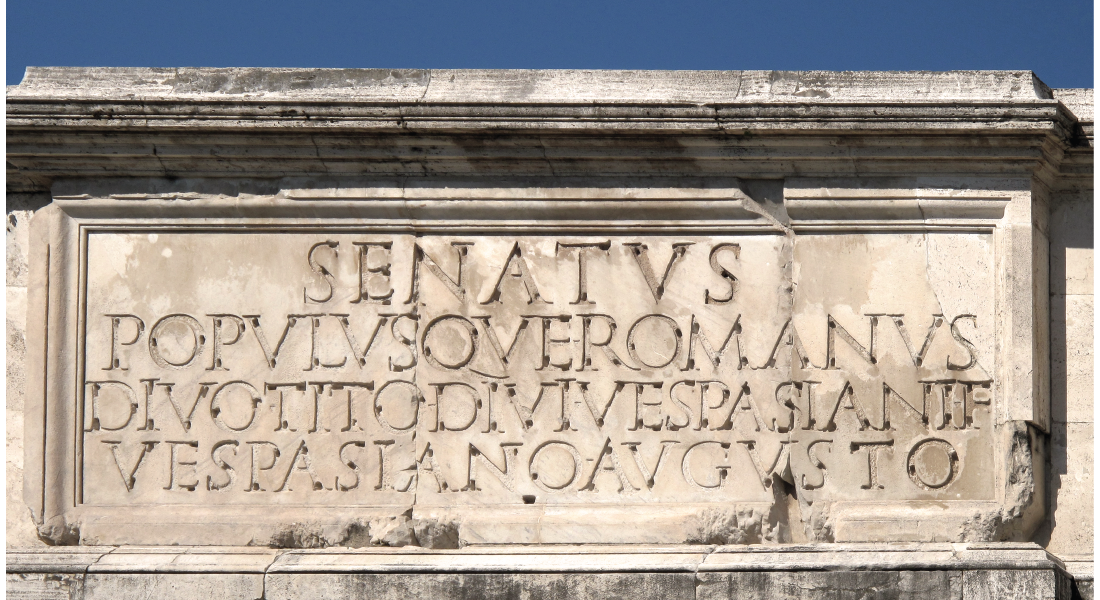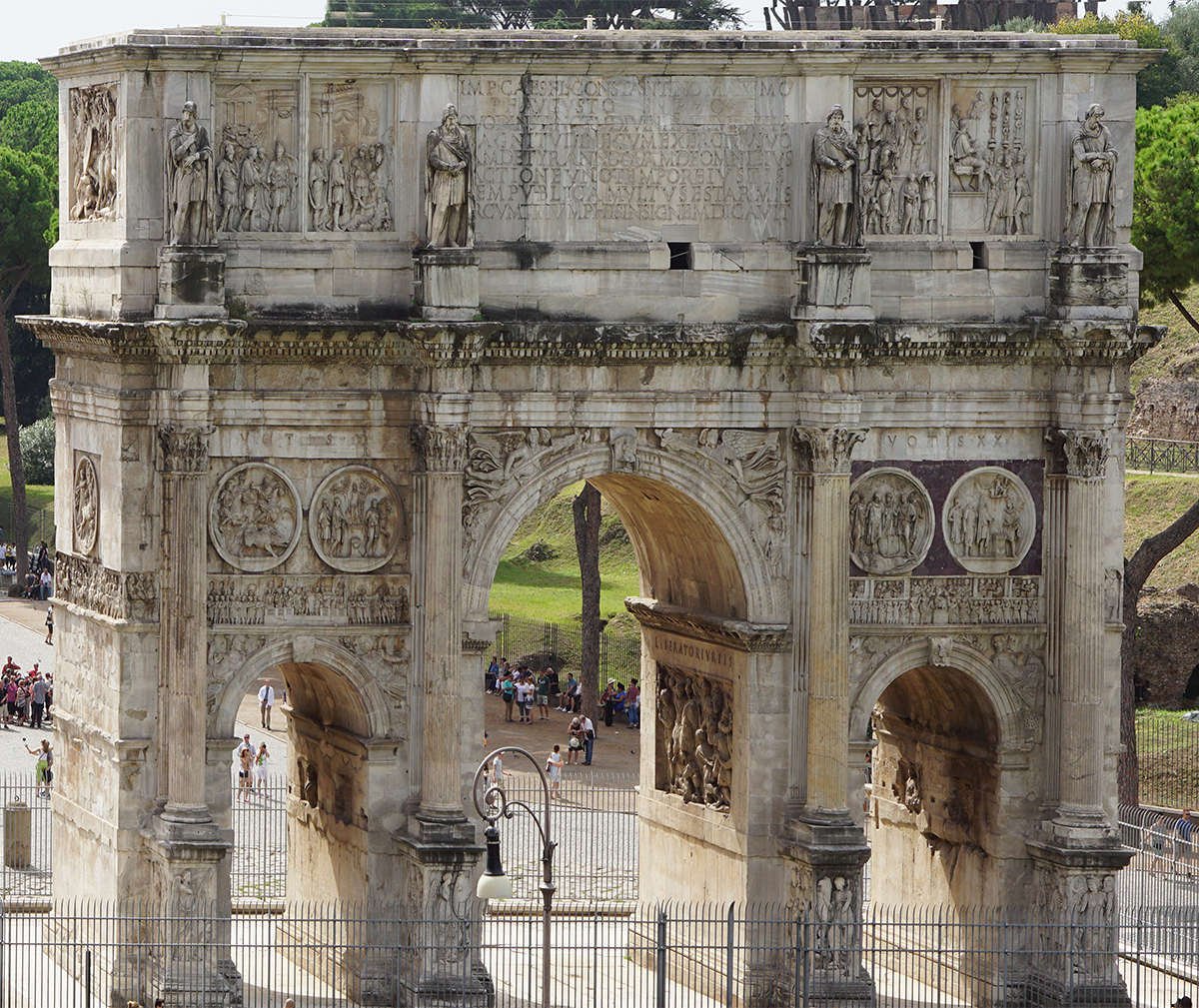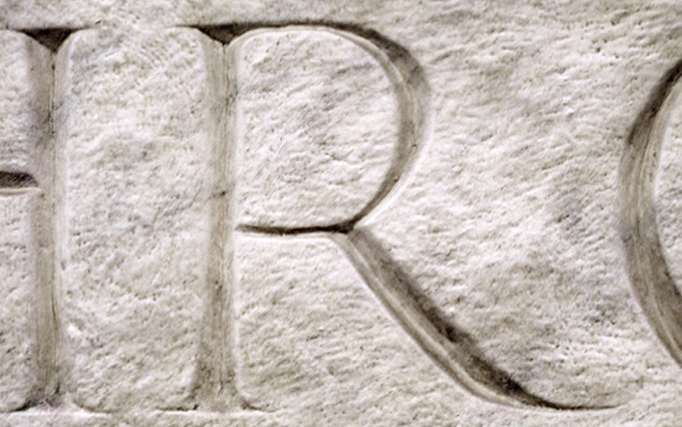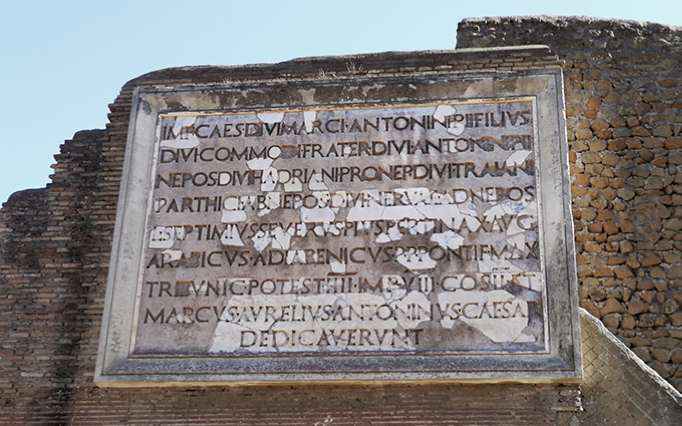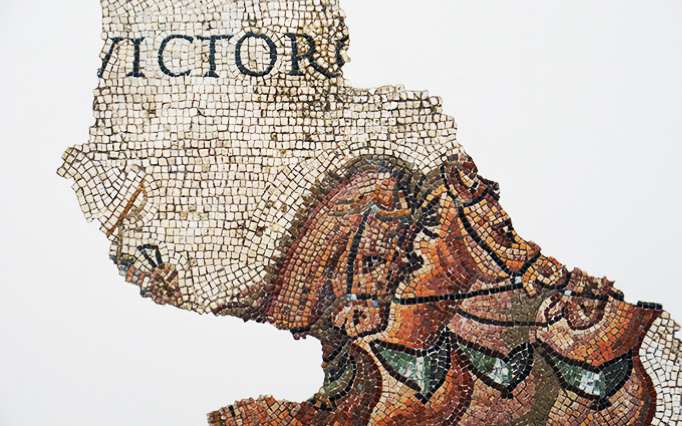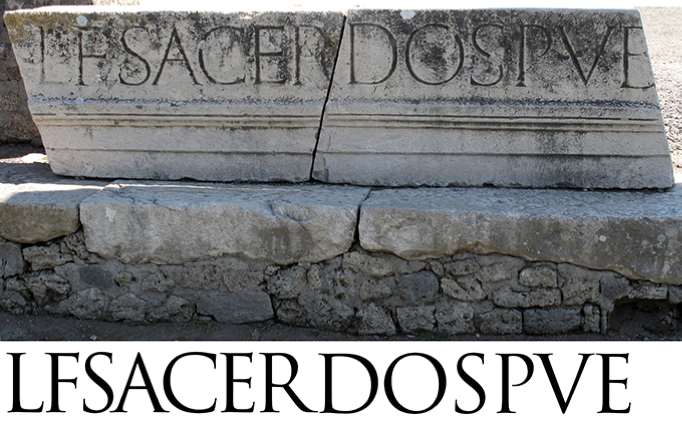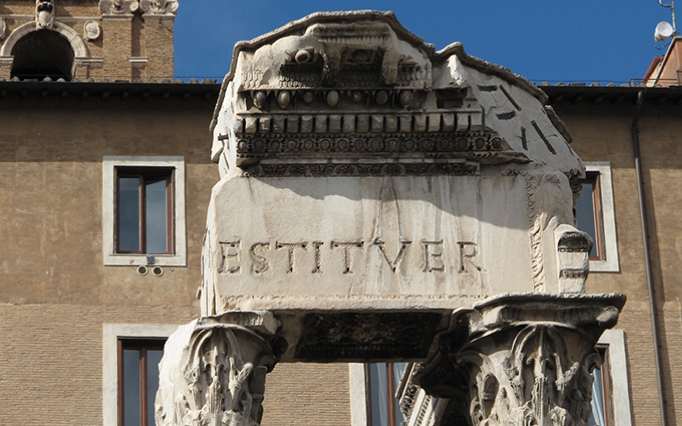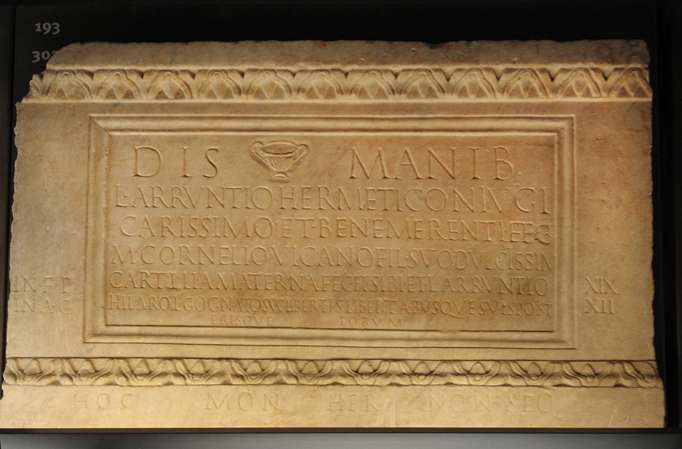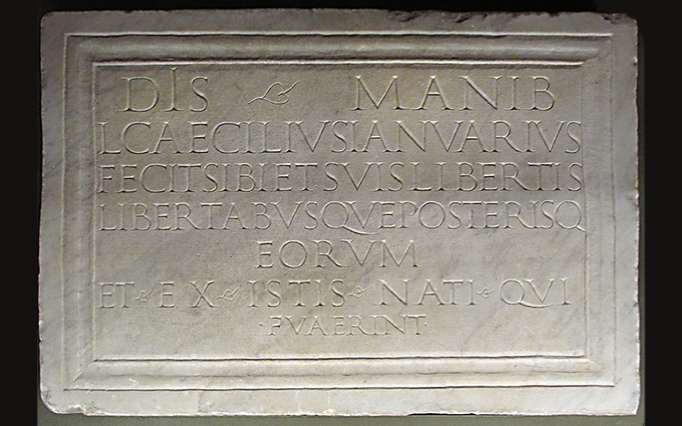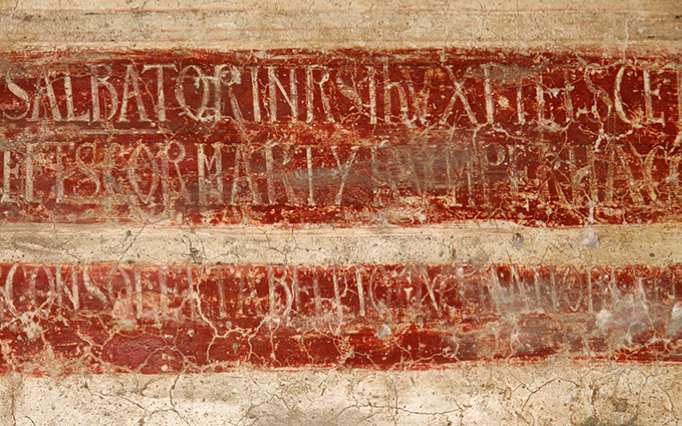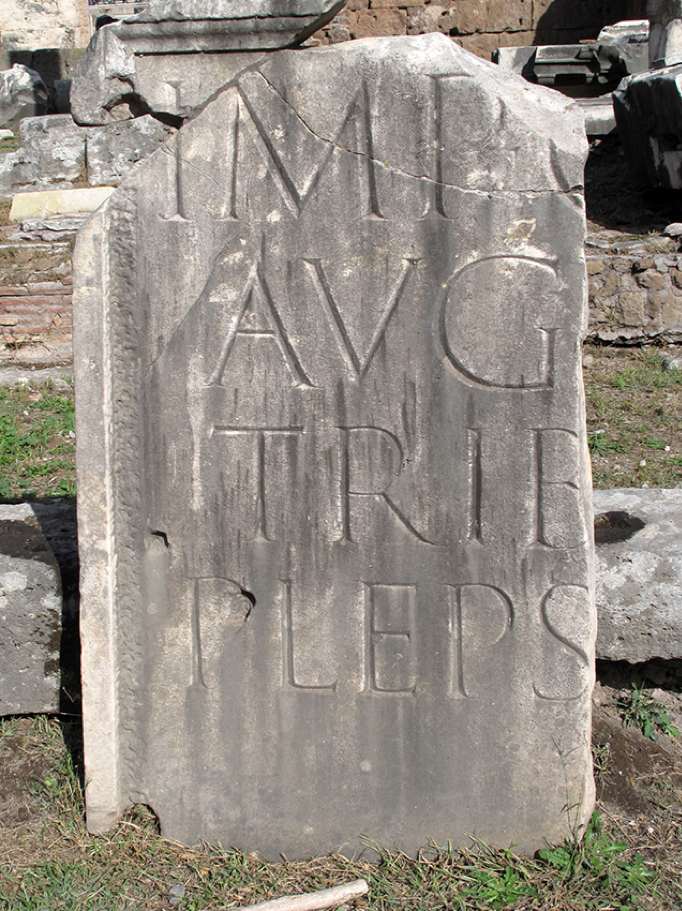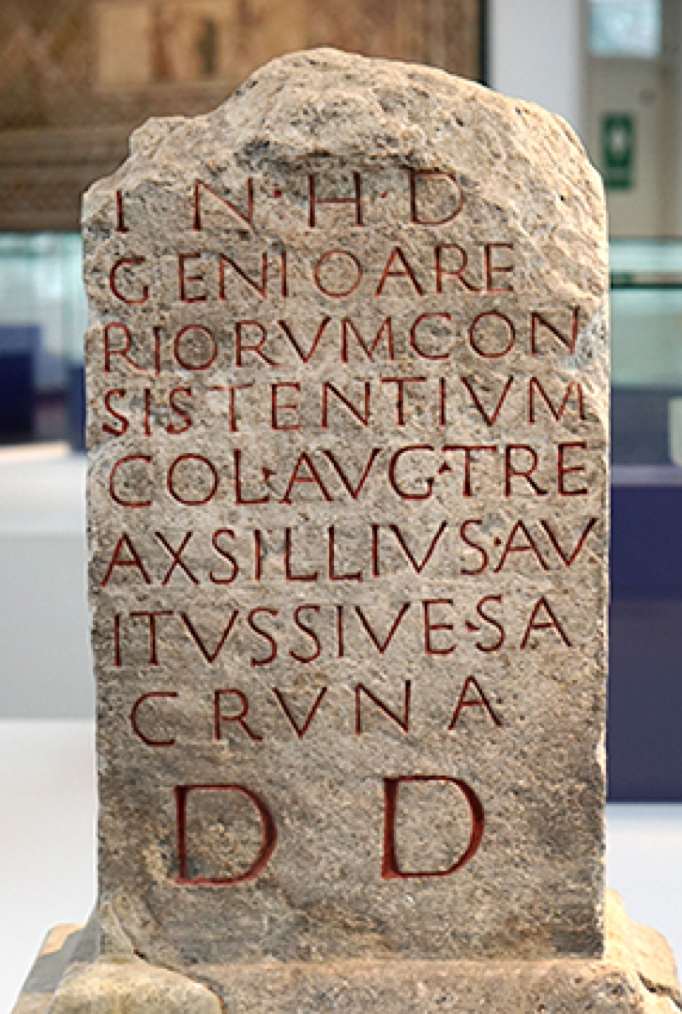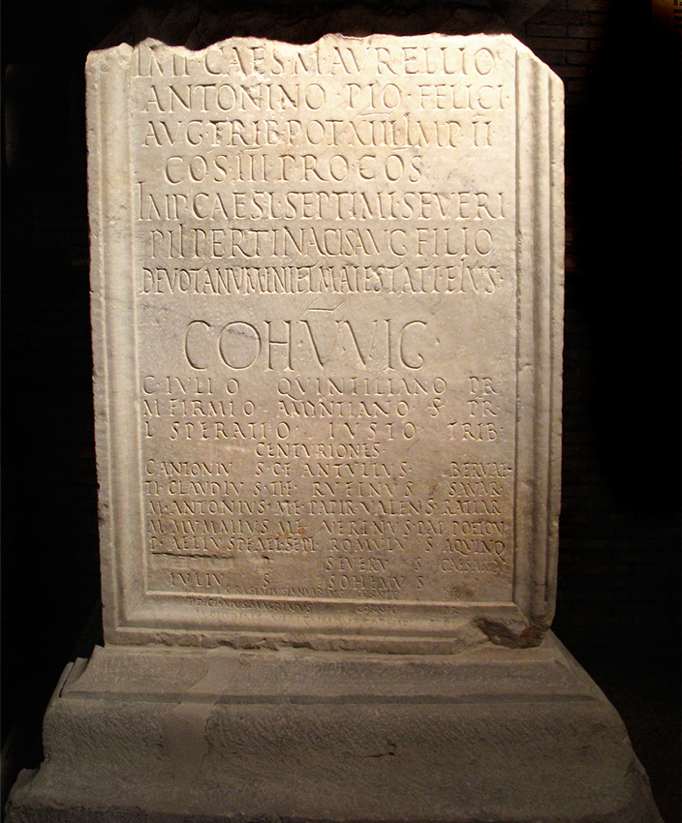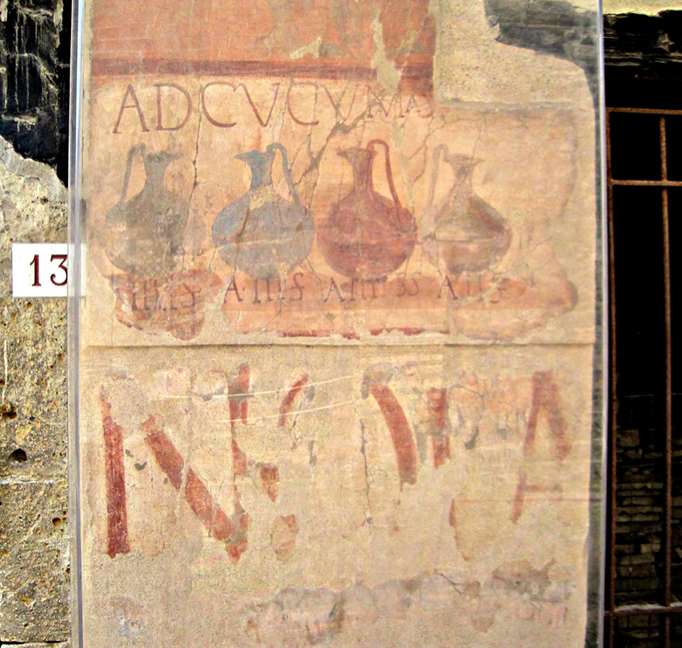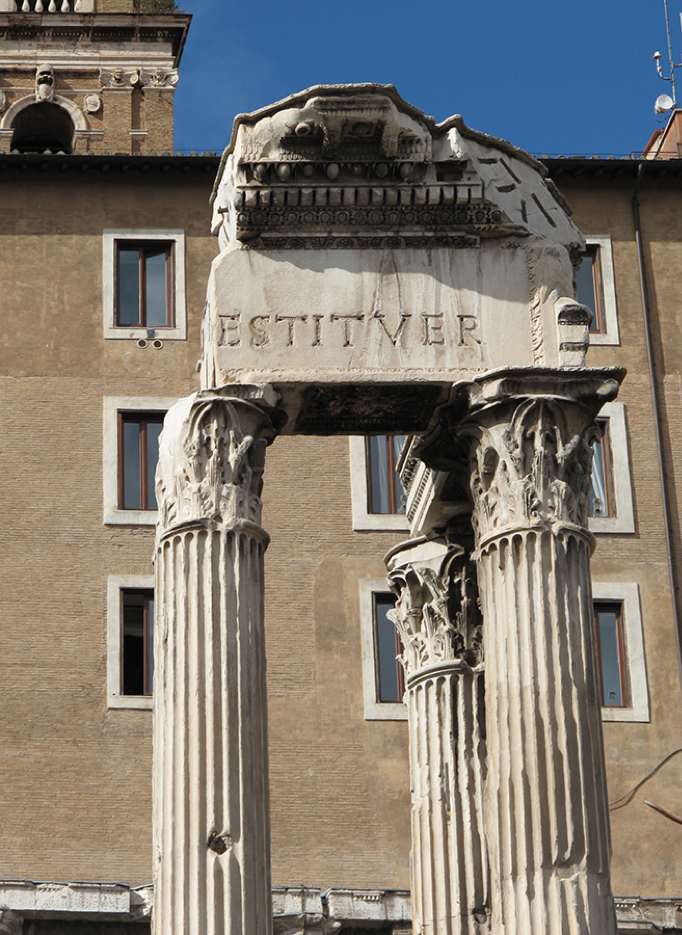The ROMAN CIVILIZATION
IMAGES OF THE ROMAN CIVILIZATION
THE Latin Alphabet
ETRUSCAN ORIGINS
The earliest known inscriptions in the Latin alphabet date from the 6th century BC. The Romans used just 23 letters to write Latin; including the Greek letters “Y” and “Z” to the alphabet they inherited from the Etruscans. There were no lowercase letters . For phonetic reasons, the symbols “J”, “U” and “W” were added to our alphabet during the Middle Ages. The Latin language used an “I” symbol where we use a “J”, a “V” symbol where we use a “U”. “The “w” consonant did not exist in Latin. Think of the famous text “SENATVS POPVLVSQVE ROMANVS…” (“The senate and people of Rome…”)
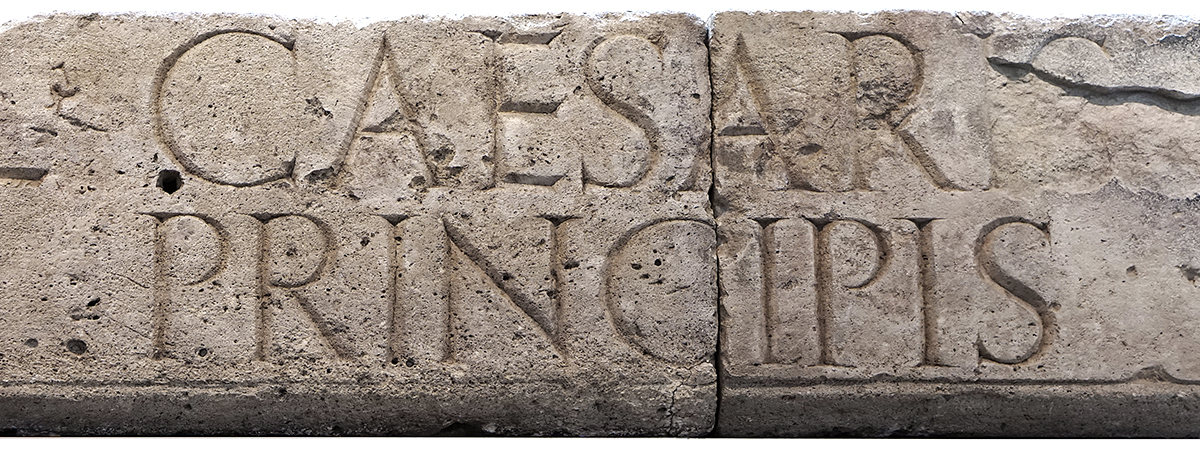
SENATVS
POPVLVSQVE·ROMANVS
DIVO·TITO·DIVI·VESPASIANI·F(ILIO)
VESPASIANO·AVGVSTO
which means
THE ROMAN SENATE AND PEOPLE
TO THE DIVINE TITUS VESPASIANUS AUGUSTUS
SON OF THE DIVINE VESPASIAN

Evolution of Language
The Latin was the language of the Romans from the earliest known period. Writing under the first Roman emperor Augustus, Virgil emphasizes that Latin was a source of Roman unity and tradition.The Etruscans, who ruled early Rome, adopted the Cumaean Greek alphabet, which was modified over time to become the Etruscan alphabet, which was in turn adopted and further modified by the Romans to produce the Latin alphabet.
The birth certificates and wills of Roman citizens had to be written in Latin until the time of Alexander Severus (reigned 222–235). lliterate Roman subjects would have someone such as a government scribe (scriba) read or write their official documents for them. Laws and edicts were posted in writing as well as read out.Public art and religious ceremonies were ways to communicate imperial ideology regardless of language spoken or ability to read. An early form of story ballet (pantomimus) was brought to Rome by Greek performers and became popular throughout the multilingual Empire in part because it relied on gesture rather than verbal expression.After the decentralization of political power in late antiquity, Latin developed locally in the Western provinces into branches that became the Romance languages, including Spanish, Portuguese, French, and Italian. Latin became the language of conquered areas because local people started speaking it, and not because the population was displaced by Latin-speakers.

The dedicatory inscription on the arch reads:
Arch of Septimius Severus
IMP · CAES · LVCIO · SEPTIMIO · M · FIL · SEVERO · PIO · PERTINACI · AVG · PATRI PATRIAE PARTHICO · ARABICO · ET PARTHICO · ADIABENICO · PONTIFIC · MAXIMO · TRIBUNIC · POTEST · XI · IMP · XI · COS · III · PROCOS · ET IMP · CAES · M · AVRELIO · L · FIL · ANTONINO · AVG · PIO · FELICI · TRIBUNIC · POTEST · VI · COS · PROCOS · (P · P · OPTIMIS · FORTISSIMISQVE · PRINCIPIBUS) OB · REM · PVBLICAM · RESTITVTAM · IMPERIVMQVE · POPVLI · ROMANI · PROPAGATVM · INSIGNIBVS · VIRTVTIBVS · EORVM · DOMI · FORISQVE · S · P · Q · R
which means
To the emperor Caesar Lucius Septimius Severus Pius Pertinax Augustus Parthicus Arabicus Parthicus Adiabenicus, son of Marcus, father of his country, Pontifex Maximus, in the eleventh year of his tribunician power, in the eleventh year of his rule, consul thrice, and proconsul, and to the emperor Caesar Marcus Aurelius Antoninus Augustus Pius Felix, son of Lucius, in the sixth year of his tribunician power, consul, and proconsul (fathers of their country, the best and bravest emperors), on account of the restored republic and the rule of the Roman people spread by their outstanding virtues at home and abroad, the Senate and the People of Rome (SPQR)
Septimius Severus was ruling jointly as emperor with his son Caracalla (Marcus Aurelius Antoninus) when the arch was dedicated.

cursive scripts on tablets
Wax tablet is made of wood and covered with a layer of wax, often linked loosely to a cover as a "double-leaved" diptych.
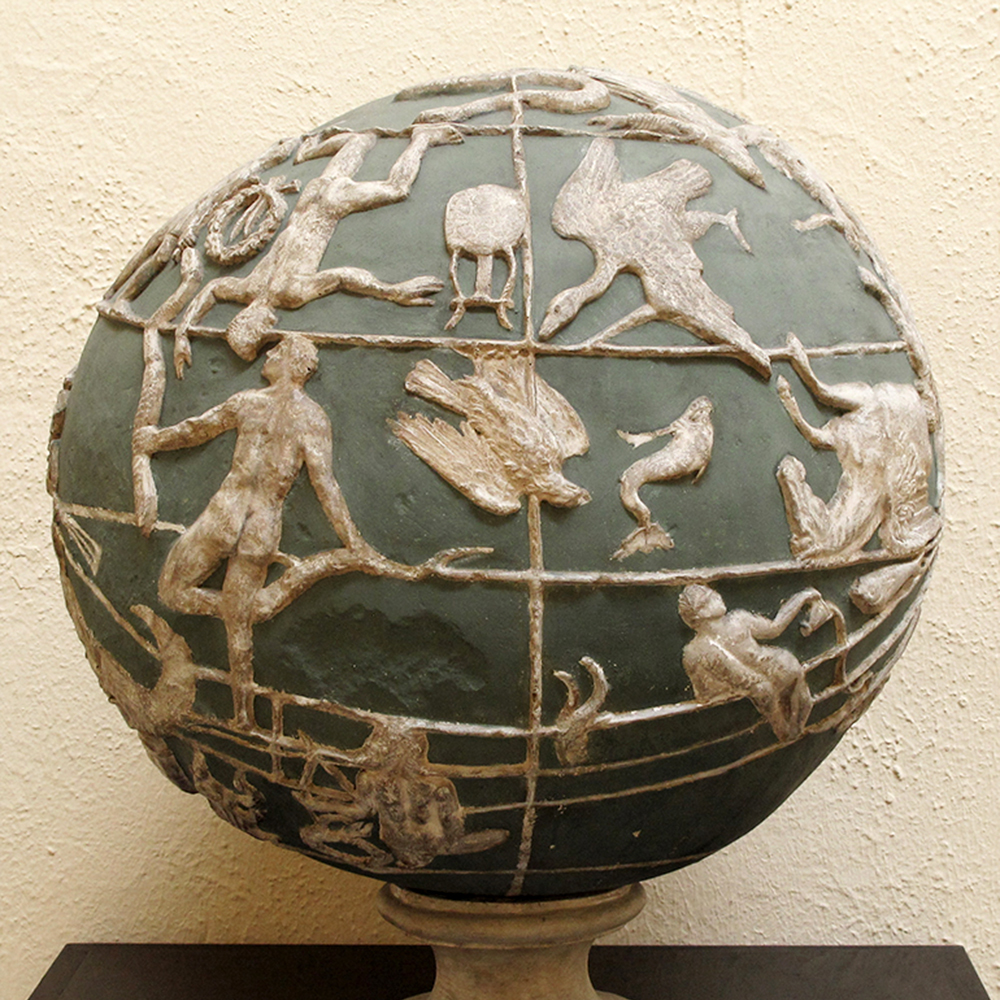
roman zodiac.
Roman era, based on concepts inherited by Hellenistic astronomy from Babylonian astronomy
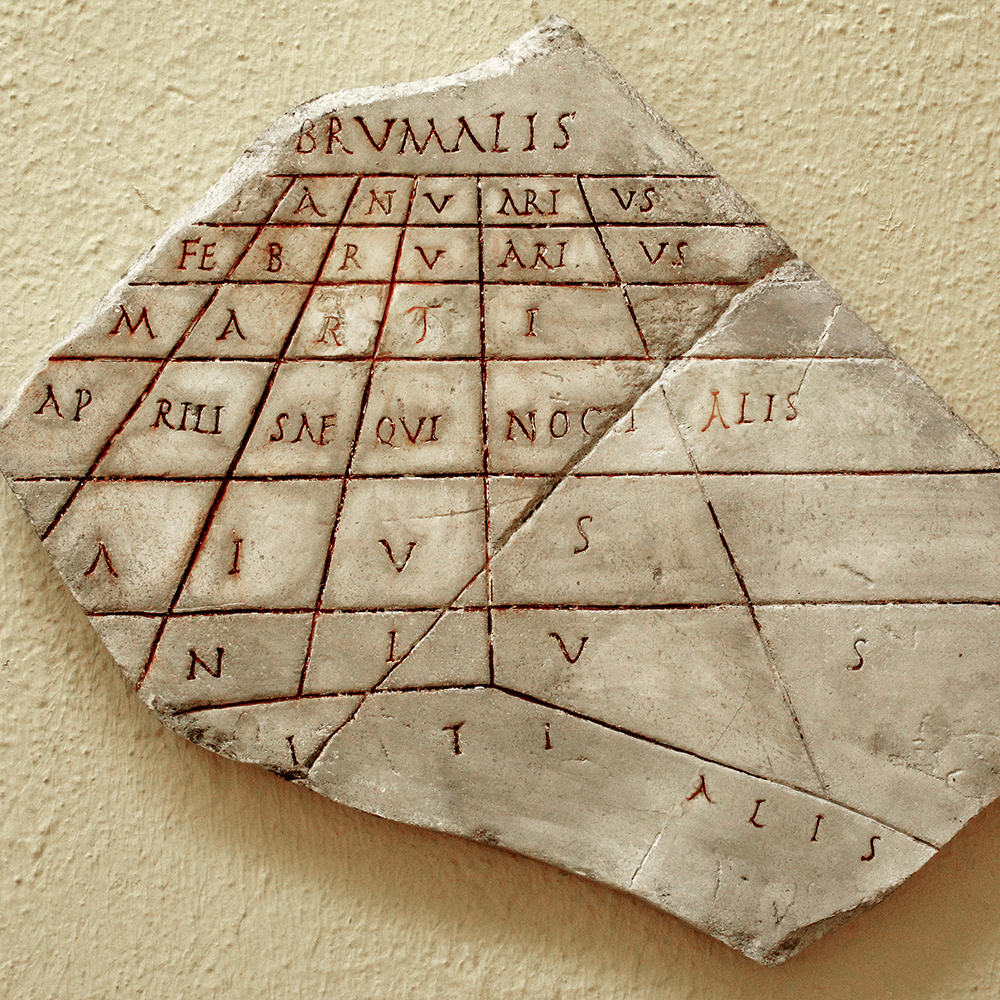
copy of sundial 1st - 2 nd AD
The Romans adopted the Greek sundials, and the first record of a sundial in Rome is 293 BC according to Pliny
The dedicatory inscription on the arch reads:
Arch of CONSTANINE
IMP · imp(eratori) · caes(ari) · fl(avio) · constantino · maximo · p(io) · f(elici) · avgusto · s(enatus) · p(opulus) · q(ue) · r(omanus) · qvod · instinctv · divinitatis · mentis · magnitvdine · cvm · exercitv · svo · tam · de · tyranno · qvam · de · omni · eivs · factione · vno · tempore · ivstis · rempvblicam · vltvs · est · armis · arcvm · trivmphis · insignem · dicavit To the Emperor Caesar Flavius Constantinus
which means
To the greatest, pious, and blessed Augustus: because he, inspired by the divine, and by the greatness of his mind, has delivered the state from the tyrant and all of his followers at the same time, with his army and just force of arms, the Senate and People of Rome have dedicated this arch, decorated with triumphs
The words instinctu divinitatis ("inspired by the divine") have been greatly commented on
Law on the power of Vespasian
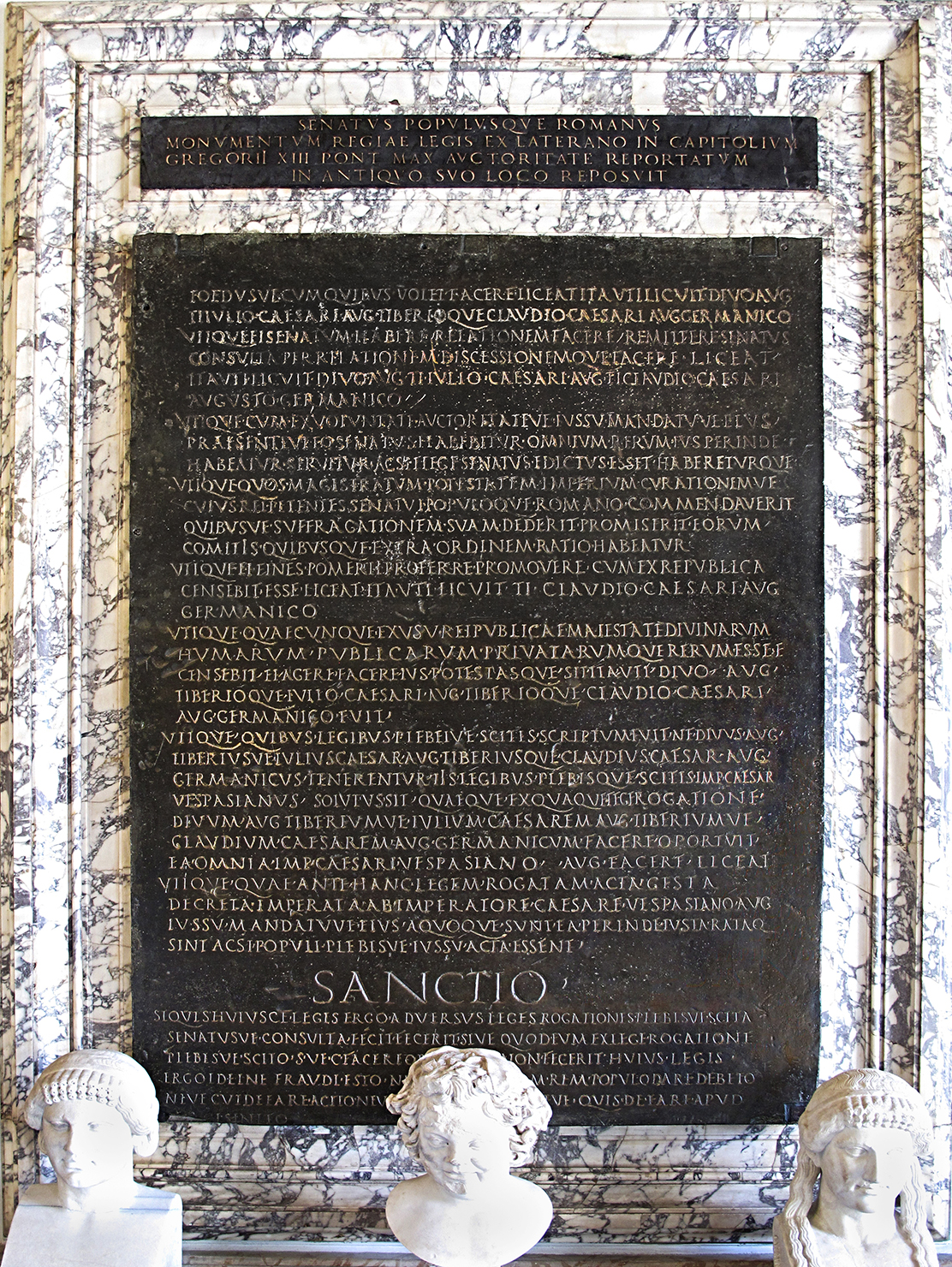
LEX DE IMPERIO VESPASIANI
Law on the power of Vespasian
(CIL, VI 930; ILS 244) )
…. and he shall be permitted to stipulate treaties with whomever he wishes, as was permitted to the divine Augustus, to Tiberius Julius Casar Augustus and to Tiberius Claudius Caesar Augustus Germanicus
He shall be permitted to convoke the Senate, submit a motion, adjourn the assembly, have a Senate decision made through the submission of a motion and a vote by division lof the senators], as was permitted to th Augustus, to Tiberius Julius Caesar Augustus, to Tiberius Claudius Caesar Augustus Germanicus.
If the Senate has been convoked by his will or authority, order or mandate or in his presence, the fullness of the law shall be maintained and preserved as if convoked and met according to the law.
Persons aspiring to be appointed to a magistrature, a power, a command or any function chom he has recommended to the Senate and the people and to uhom has given and promised his support, shall be so appointed regardless of any official list in any assembly.
He shall be permitted to move and advance the boundaries of the pomerium whenever he shall deem it expedient for the State, as was permitted to Tiberius Claudius Caesar Augustus Germanicus
He shall have the right and the power to do any act or thing he deems expedient for ahas the State and for the greatuess of things divine, human. public and private, as had the divine Augustus. Tiberius Julius Caesar Augustus and Tiberius Claudius Caesar Augustus Germanicus
The emperor Caesar Vespasian shall not be bound by the laws and plebiscites which it was written that the divine Augustus or Tiberius Julius Caesar Augustus and Tiberius Claudius Caesar Augustus Germanicus were not bound by, and the emperor Caesar Vespasian shall be permitted to do all that, based on any law or motion, the divine Augustus, or Tiberius
sanction
It anyone, acting pursuant to this law, has done or shall does anything contrary to laws, motions plebiscites or decisions of the Senate, or, pursuant to this law, has not done what he should have according to a law, motion, plebiscite or decision of the Senate, he shall not suffer damage, and no one shall be held accountable to the people for such facts, no one shall be accused of or sued for such facts, one shall allow a trial to be held against him for such facts
This legal document is enormously important for the study of the Roman Empire’s institutions. The first sentence is incomplete, indicating that there once existed at least one other bronze plaque of the same size. The inscription attests to Vespasian’s total control over the political, administrative and religious life of the empire. The text was written between December of 69 and January of 70 A.D.
BACK TO ROME
BACK TO DYNASTIES
IMAGES OF EMPERORS
ROMAN CULTURE

